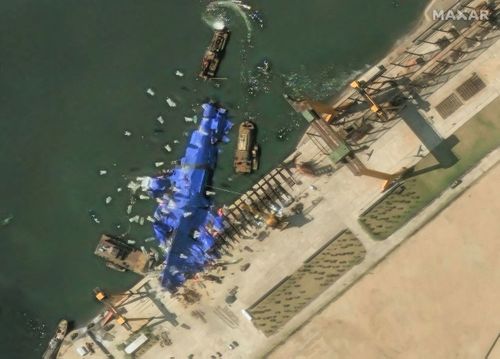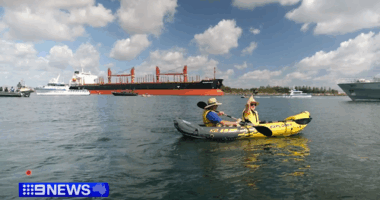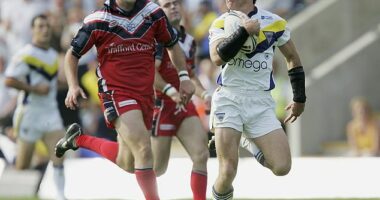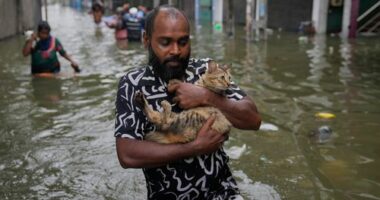Share this @internewscast.com
New satellite imagery reveals that North Korea appears to have positioned balloons near its impaired 5000-ton warship, which has been on its side and partially submerged following a failed launch last week.
The stricken destroyer was the country’s newest warship and was meant to be a triumph of North Korea’s ambitious naval modernisation effort.

Normal procedure would be to get as much buoyancy as possible in the ship and then raise it from below, Childs said.
The exact purpose of these objects remains a mystery, but specialists informed CNN that they might assist in righting the vessel or shielding it from being observed by drones.
Maxar Technologies provided satellite images showing over a dozen white, balloon-like objects situated around the destroyer since May 23. Based on their shape and visible tail fins, these balloons might be smaller versions of aerostat aircraft, resembling dirigibles, experts explained to CNN. Like blimps, these dirigibles utilize a lifting gas for buoyancy, enabling them to float in air or water.

The staggering sums countries spend on defending themselves
The images don’t appear to show any flotation bladders supporting the hull or the body of the ship, Schuster said – something the US might use in such a situation. He added that North Korea’s maritime industry might not be advanced enough for such techniques.
North Korean state media had previously reported that the damage was less severe than initially feared, and that there were no holes in the hull, though it was scratched along the side and some seawater had entered the stern. It estimated repairs could take about 10 days – though analysts are skeptical.
Schuster had previously told CNN that repair work could take up to six months, depending on how far the hull damage extends, how much water entered the warship, and how much “salt crust” might have formed on metal surfaces such as joints.
The ship’s precarious position also makes the salvage operation unusually complex. “Having it half in and half out of the water is basically the worst possible situation,” said Decker Eveleth, an associate research analyst at CNA, a nonprofit specialising in defense research.
He added that the operation would be simpler if the ship had fully capsized into the water, or if it had fallen over entirely on land. “But as it’s half on land and half on water – if you try to pull the sunken half out, you’re risking twisting and breaking the keel,” Eveleth said, referring to the structural spine running along the ship’s bottom. “And if you do that, the whole ship is junk.”
Childs said North Korea may have to cut the ship into pieces and then try to salvage what it can because righting it from its current position is an extremely complex task.
“Very often the only way you clear the dock … is to dismantle at least part of the ship to make the operation easier, right what you have left and tow it away and make a decision on whether you rebuild it or scrap it,” he said.













